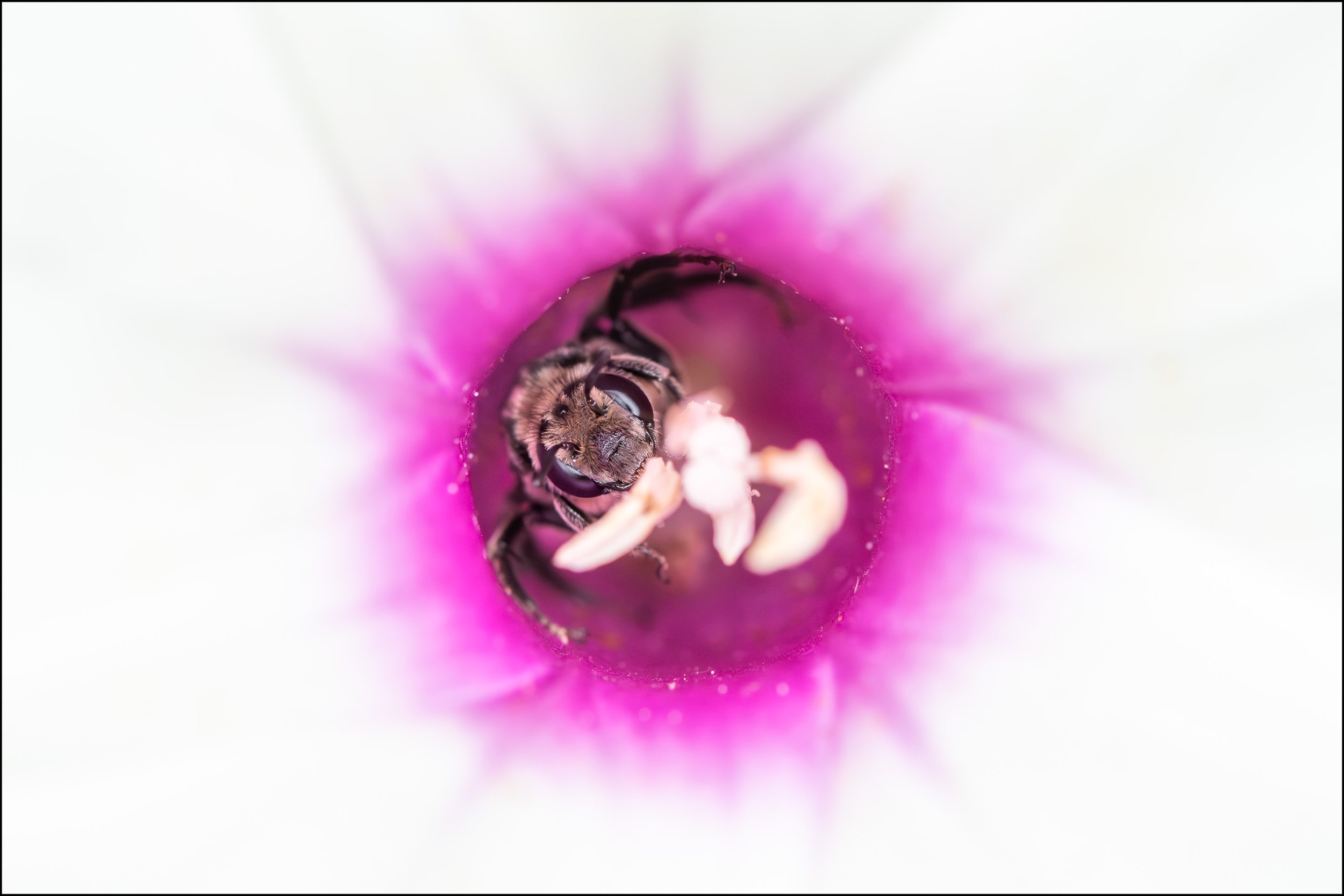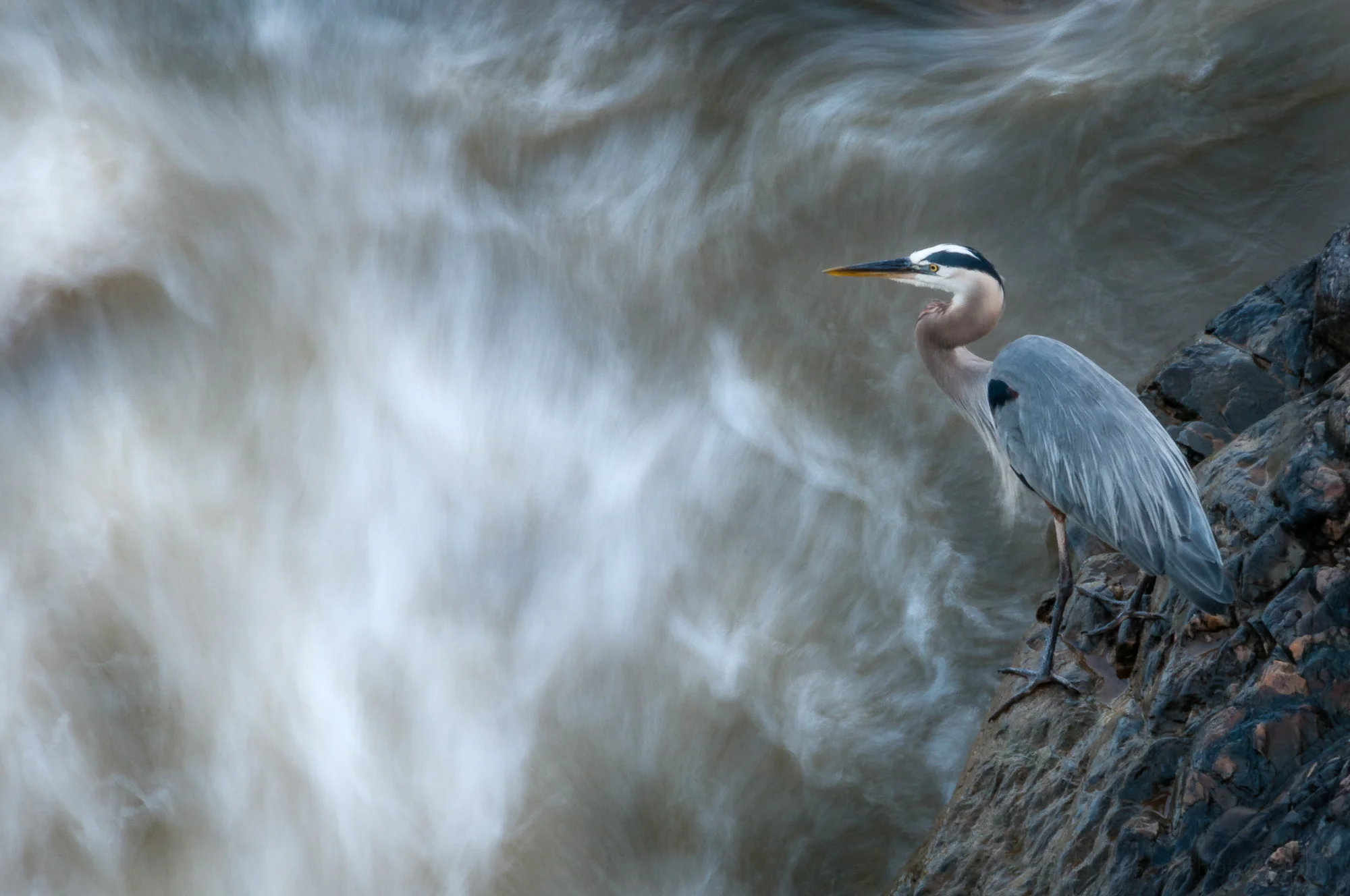A bee sheltered in a Rose of Sharon flower.
This was such a fun photograph to create. There was a light drizzle, but not enough that I had to cover my camera. The light was very soft, but it was also somewhat dark from the camera’s perspective. I was out photographing flowers with my new Lensbaby Velvet 56 lens, trying different compositions and different aperture settings, just trying to get a feel for the lens.
When I made my way to the Rose of Sharon I found a bumble bee sheltered inside one of the flowers. It wasn’t at all upset by my presence, even as I pushed the front of the lens right into the flower, almost filling the entrance. This blocked most of the light that might have entered the flower and lit the bee, but as you can see the light did still reach the interior by shining through the petals.
I created a number of images of this bee, sometimes experimenting with composition, but sometimes just trying to get a shot with the bee in focus. The Lensbaby Velvet 56 is a fully manual lens and I don’t often focus manually, so I was essentially relearning how to do this. Thankfully, I did a reasonably good job capturing the bee in focus for this photograph, though parts of it are still out of focus. It might have been a good idea if I’d stopped down the aperture just a bit to capture a little more depth of field. You can see from the sides of the petals how shallow the depth of field is.
Because it was so dark I had boosted my ISO to 1250. The shutter speed for this image was 1/40 second and I was hand holding the camera. This lens doesn’t have VR so I did the best I could to hold it steady. It’s not a heavy or large lens so this wasn’t too difficult.
I don’t know the exact aperture I used as the Lensbaby Velvet 56 does not have electrical contacts so it can’t communicate the aperture to the camera. It was not wide open as that would have created a very soft focus effect. There’s a good chance this was closer to f/8, possibly even smaller. I was physically very close to the bee, likely approaching the minimum focusing distance of 5 inches, which contributed to the shallow depth of field. I really wanted to fill the frame with the bee and the enclosing petals of the Rose of Sharon.
Sheltered in a Rose of Sharon is available for purchase as wall art or on a variety of products.
See my first impression of the Lensbaby Velvet 56 for more examples of photographs created with this lens.
I hope you enjoyed this post. If so you can sign up for my email list to hear about new content. I typically send an email each week and you can easily unsubscribe if it’s no longer to your liking.



























